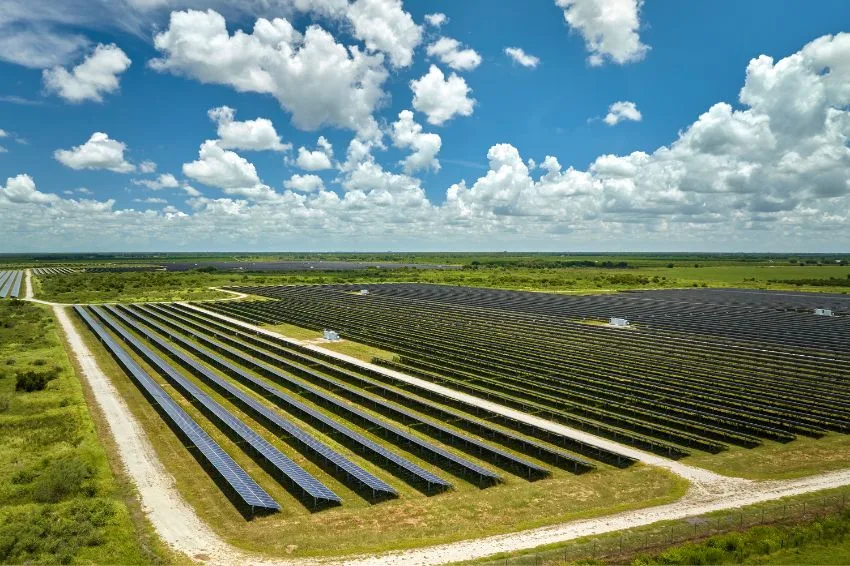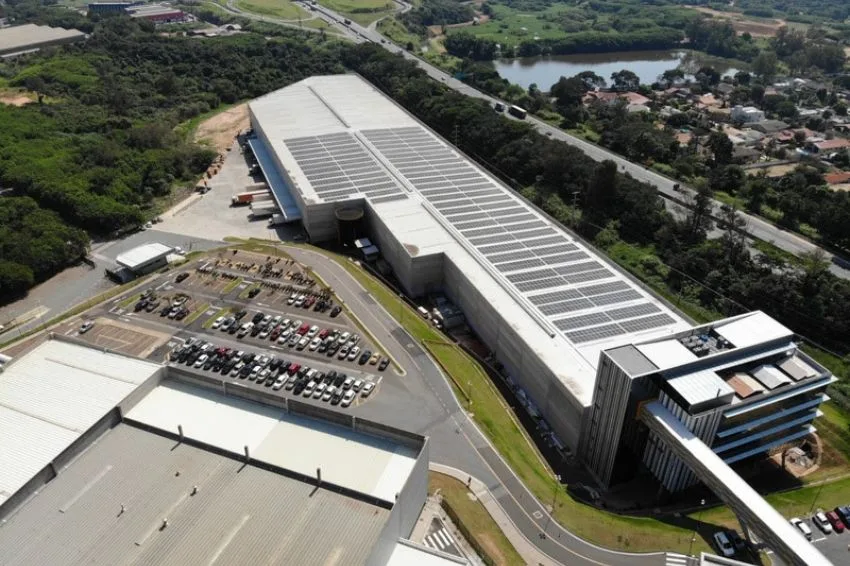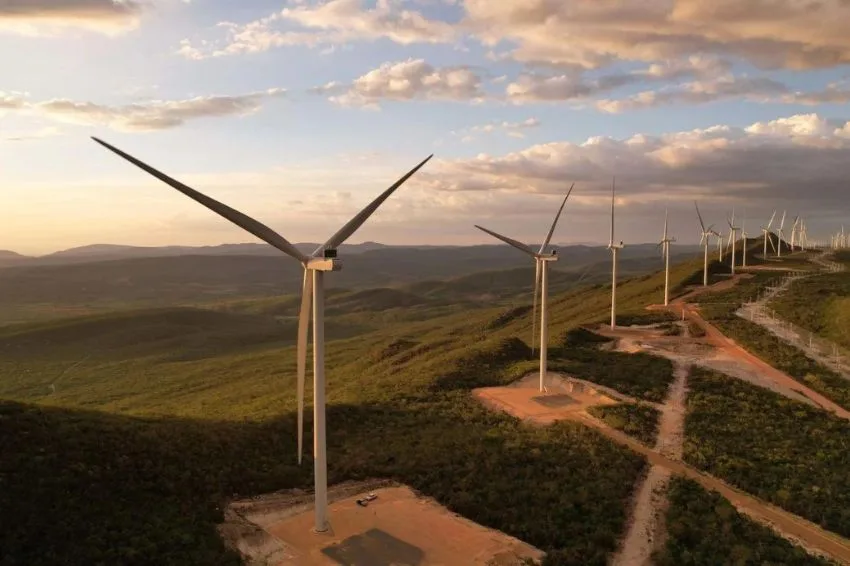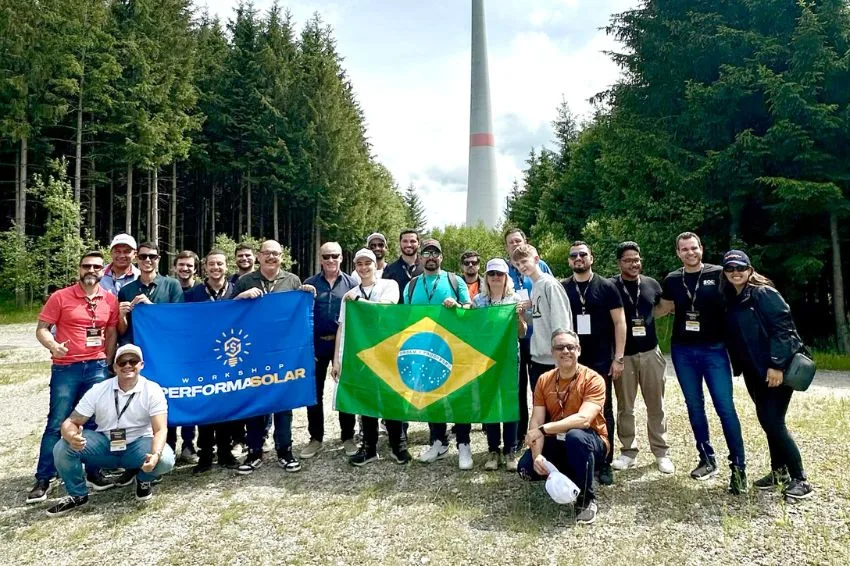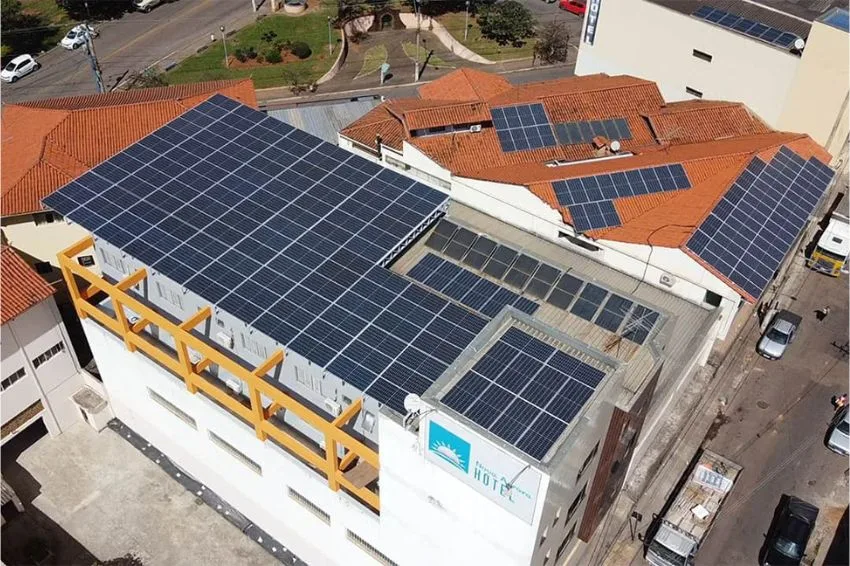A solar farm is a photovoltaic plant included in the distributed generation segment, intended for sale or rental of lots of solar panels for people and companies in the captive market (consumers are served exclusively by distributors and are required to pay a tariff defined by the National Electric Energy Agency) who wish to generate their own energy to reduce their electricity bill without a system installed on the property where is actually energy consumption.
Solar farms get their name because they are built on soil, rather than roofs, and usually in regions far from city centers – counting on hundreds and thousands of photovoltaic modules to generate energy that will be destined for customers in other locations and distributed through distribution lines. This is because, in general, the value of this type of property is cheaper, which enhances the profits of the solar farm owner.
A Electricity generated at the solar farm is exported (supplied) to the electrical grid to which it is connected, and duly registered on the energy meter as energy supplied. This will generate energy credits, which will be transferred to energy consumers linked to the solar farm (continue in this text and we will explain the possible ways of doing this).
In this way, the credits generated by the farm are used to reduction of the electricity consumed by the linked consumer. This credit compensation mechanism is in accordance with regulations (REN 1,000 of ANEEL) and current laws (Law 14,300).
Therefore, in this electricity generation model the owner invests in construction and equipment, It is offer a discount on the electricity bill for energy consumers to join. Even with the discount, the owner will receive a return on his investment due to the fact that solar energy is cheaper than the energy consumed from the interconnected electrical system.
What are the advantages of solar farm?
In addition to democratizing the use of solar energy and helping the environment, a solar farm can also help you save every month, because the energy produced by solar panels is converted into energy credits – which are used to obtain discounts on your utility bill. energy from the farm owner or other consumers designated by him.
What are the sustainable benefits of solar farm?
Solar farms start from a non-polluting energy source, which is sunlight. Therefore, by using a photovoltaic energy generator, you are contributing to the environment and participating in the energy transition.
Many energy sources used around the world contribute to the increase in global emissions of gases that intensify the greenhouse effect, one of the main causes of the serious consequences of global warming.
According to a report by the IEA (International Energy Agency), the use of solar energy can reduce CO2 emissions in the world in 6 billion tons by 2050.
In absolute terms, this would be equivalent to taking all combustion cars on Earth out of circulation for a year.

The UN (United Nations) highlights that the implementation of photovoltaic systems reduces energy demand for cooling the planet by 12%, also helping to contain the urban heat island and bringing benefits to everyone’s health.
It is important to highlight that global warming has influenced the world's climate, and we can already see the extreme effects of these changes.
In Brazil, we had major storms in the capitals, which left people without power for a long time, and more recently the great disaster that happened in the south of Brazil.
It is a fact that extreme climate effects are related to the planet's CO2 emissions.
How much does it cost to build a solar energy farm?
Costs are basically made up of two categories:
- Capex (capital expense);
- Opex (operational expense).
The first is the initial investment to cover equipment (solar panels, inverters, structures, cables, transformers, etc.), as well as engineering and assembly services and construction insurance.
Operating costs are those related to the operation and maintenance of the plant, such as cleaning the modules, security and property insurance, land rent, contracted demand, financial and accounting management of the enterprise, for example.
For a 1 MW solar farm, Capex is estimated at around R$ 4 million, and Opex in the order of R$ 150 thousand per year.
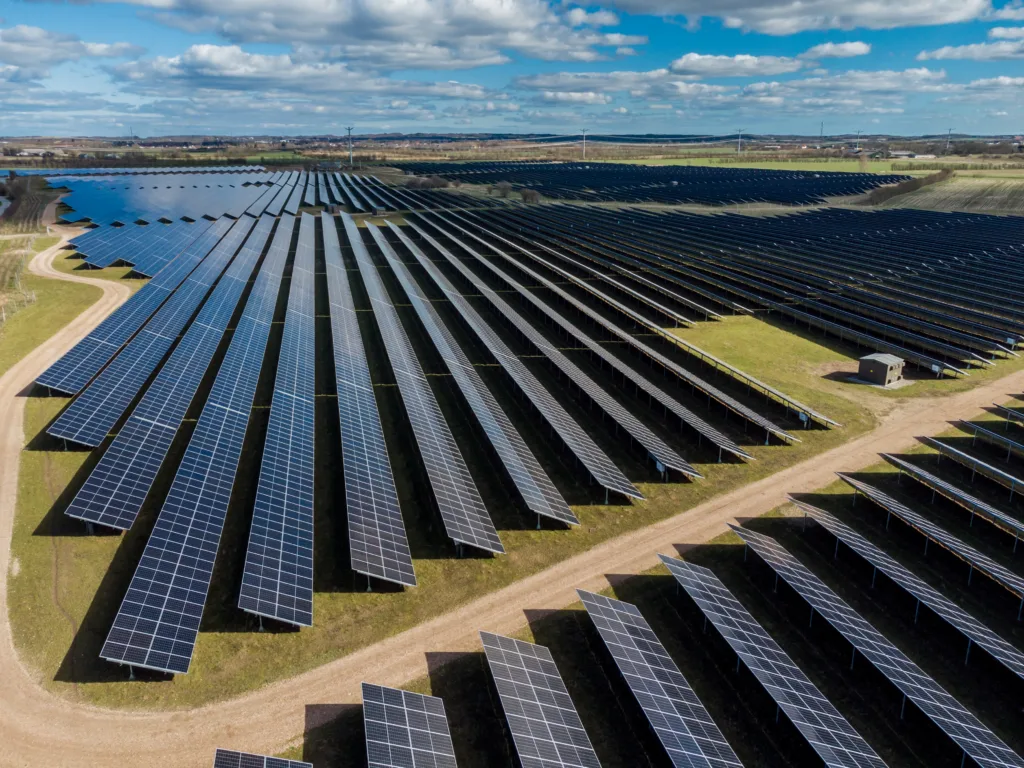
Is a solar farm worth it?
Solar farms are usually worth it for both the owner (investor) and consumers. This, obviously, depends on the negotiation.
The owner obtains a payback of approximately 5 years from a project that must operate for at least 25 years.
Consumers usually receive an immediate discount of 10 to 20% on their energy bill.
What are the possible modalities in current legislation?
Two modalities are possible:
- Remote self-consumption;
- Shared Generation.
Remote Self-Consumption is a modality that allows a micro or mini energy generator to share the excess credit generated, for example, from a photovoltaic system installed in its unit to other properties that have the same CNPJ or CPF as holder and within the same concession area as the distributor.
For example: a network of gas stations holds ownership of the solar energy farm's energy bill, and uses the energy credits generated to save on the energy bill of each of its stations (headquarters-branch relationship – same CNPJ).
In shared generation, it is allowed to mix different owners. To do so, consumers must have demonstrated a commitment to solidarity. This can occur through a cooperative (formed by at least 20 individuals), or through a consortium (formed by at least two or more legal entities), association or condominium.
Beneficiaries can be small businesses, chains with multiple units and even homes. This generation model is also the target of interest for many investors, using alternative energy sources, precisely because of the economic and sustainable factor for individuals and legal entities.
How to set up a solar energy farm?
Firstly, it is necessary to hire specialized assistance, who will instruct you on the legal aspects and financial.
If the project is possible and profitable, an Owner's Engineering company must be hired, which will participate in structuring the project and help with hiring an EPC (Engineering, Procurement and Construction) company, which will be responsible for executing the project. .
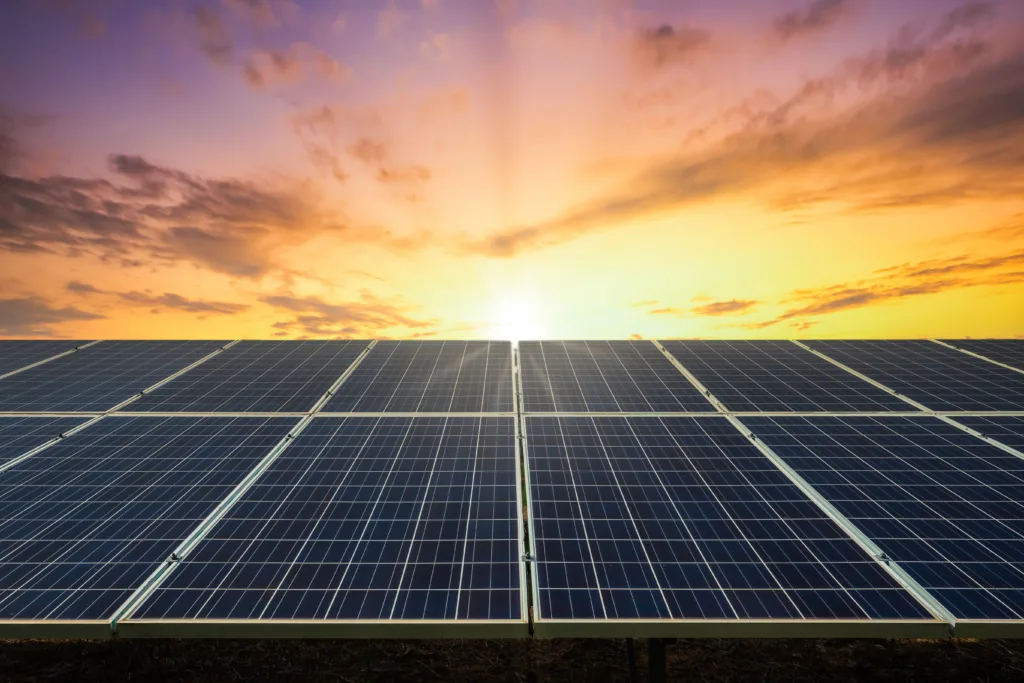
Challenges of implementing a solar energy farm
The solar energy market has been very prominent in Brazil. Since 2012, there have been R$ 197.8 billion in new investments accounted for by calculations by ABSOLAR (Brazilian Photovoltaic Solar Energy Association).
Additionally, more than 1.2 million new jobs were created and more than 47.7 million tons of CO2 were avoided.
There is no doubt that the source continues to expand, however, there are some challenges to be overcome when implementing a solar farm, such as high initial investment cost, need for large areas of land available, issues of integration with the electrical grid, the impact visual and environmental and possible regulatory and bureaucratic restrictions.
What is the best state to build a solar farm?
Currently, the best state to build a solar energy farm is Minas Gerais. This is due to the tax benefits granted through State Law 22,549/2017, which exempts ICMS from energy generated by the solar farm.
The aforementioned law also exempts ICMS from the generation of shared solar farms (cooperatives and consortia).
Not coincidentally, the vast majority of solar farms are located in the state of Minas Gerais.
However, due to the large number of solar farms installed in the state, it is currently quite common for the local energy concessionaire (Cemig) to point out technical restrictions, which in most cases makes the project unfeasible.
As a result, other states have shown interesting viability, such as SP, RJ, MS, MT, among others – in the context of GD I, projects that already existed and/or were filed by January 7, 2022, following old compensation rules , until December 2045.
Do you want to specialize in the solar energy market? Find industry-focused courses today!
Solar farm mergers and acquisitions
With the accelerated growth of the solar energy market, M&A operations (mergers and acquisitions) have become increasingly common. Such operations are strategic to consolidate the sector and optimize resources, allowing companies to become more competitive and efficient.
Reasons for M&A in the solar sector
- Capacity expansion: companies seek to increase their generation capacity by acquiring already established solar farms, reducing the time and costs associated with developing new projects;
- Portfolio diversification: purchasing photovoltaic systems allows companies to diversify their revenue sources and reduce risks associated with a single technology or geographic location;
- Scale economy: the integration of multiple plants can generate significant economies of scale, reducing operational and maintenance costs;
- Market consolidation: In a competitive industry, consolidation through M&A can increase market share and strengthen a company's strategic position.
Challenges of M&A operations
- Asset Valuation: determining the fair value of a solar plant can be complex, involving the analysis of technical, financial and regulatory aspects;
- Operational integration: Integrating different operations, systems and business cultures can present significant challenges;
- Regulation: Compliance with local laws and regulations is crucial and can vary significantly between regions and countries;
- Financing: Structuring the appropriate financing for an acquisition can be challenging, especially in a market with high volatility.
Given the complexity of these challenges, it is ideal to hire specialized companies to conduct the solar farm M&A process. A CS Consulting, company of Solar Channel, performs detailed technical assessments to support due diligence processes, ensuring a successful transaction for the buyer. Expertise in technical and regulatory analysis has been crucial in ensuring that acquisitions in the solar sector are advantageous and free from hidden risks.
Conclusion
The solar farm in Brazil plays an important role in the decentralization and democratization of energy.
The source is no longer an expanding renewable energy technology, but rather a 'kickstart' for the energy transition in the world, according to the report carried out by Wood Mackenzie.
In 2023, solar reached 1.5 TW installed worldwide and another 3 TW of capacity is planned for the next ten years.
In recent years, Brazil has stood out in the global photovoltaic energy scenario with significant growth, both due to its geography favorable to the installation of this type of technology, and due to social support and incentives.
All content on Canal Solar is protected by copyright law, and partial or total reproduction of this site in any medium is expressly prohibited. If you are interested in collaborating or reusing some of our material, we ask that you contact us via email: [email protected].


